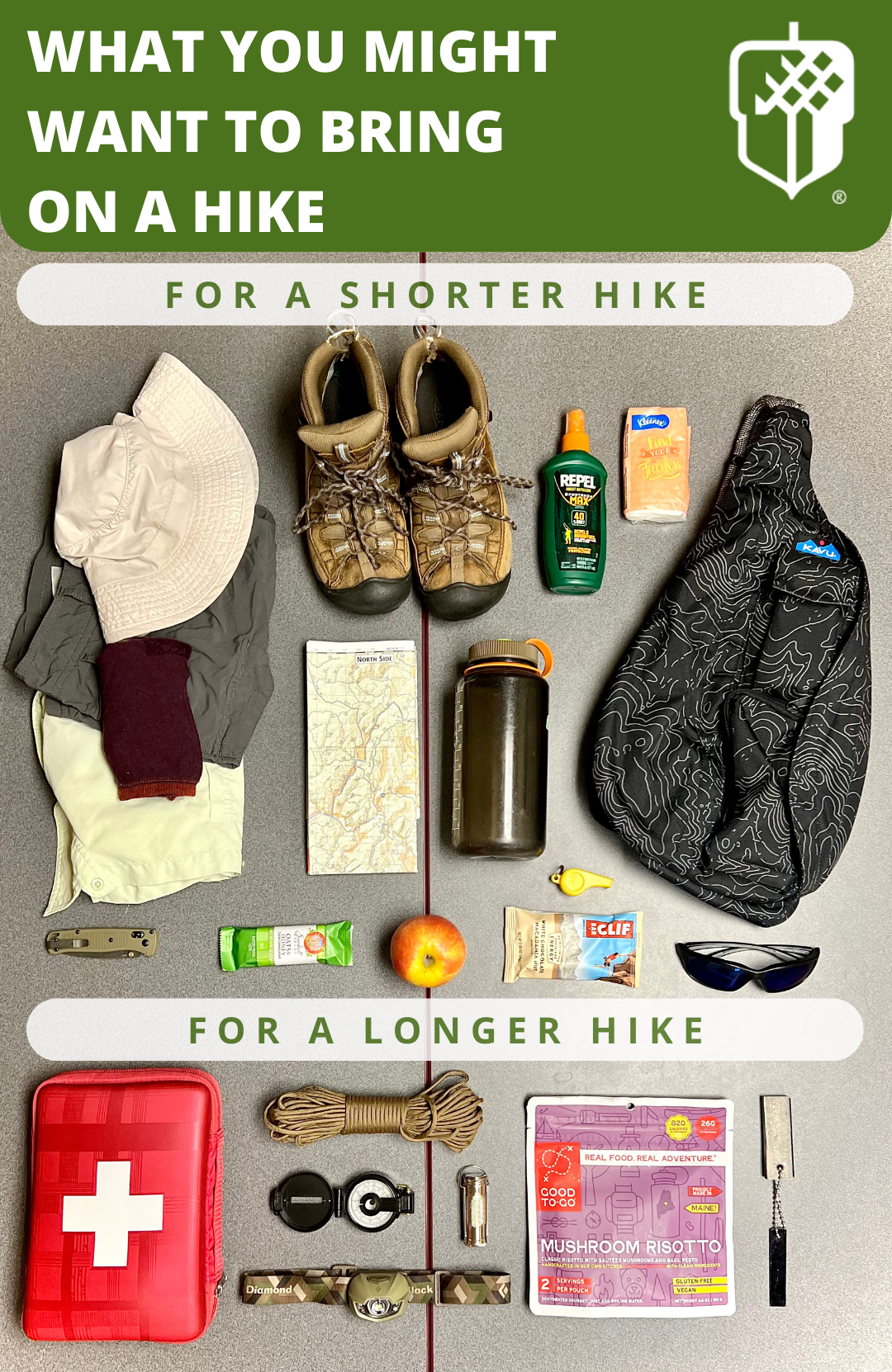What to Bring on a Hike
By Mack Swenson on August 16, 2022 in Blog
Whether you’re traversing the flat lands of central Iowa or scaling the bluffs in the northeast corner of the state, these essentials will help get you from the trailhead to trail’s end.
Quick tips: 
- Keep your hiking pack as lightweight as possible
- What you should bring changes with the length of your planned hike! A quick jaunt down the trail might not require you bring anything at all, but the suggestions below will keep you prepared for a longer trek.
Clothing and Wearables
Hiking shoes: For gentle hikes on smooth terrain, hiking shoes or trail runners will work fine. For rougher hikes on rocky terrain, a more supportive boot is preferable.
Clothing: Your clothing should offer at least some protection from the sun’s rays, brush and insects, and it is best to dress in layers. Synthetic fabrics like polyester and nylon are excellent choices because they dry quickly and are durable and lightweight. For colder weather, natural fibers like wool keep you warm even in wet conditions. Avoid cotton and fleece, which don’t dry quickly. If you expect overgrowth on the trail, longer pants will provide greater protection than shorts. Additionally, wear synthetic or wool socks, breathable undergarments and a hat to protect your face from the sun. If it is logical to do so, pack items for rain and/or cold, such a jacket, warm hat, gloves and a rain jacket.
Shoulder pack: A backpack, rather than a crossbody or messenger bag, will evenly distribute weight and keep your hands free. Choose a high-quality backpack built for the outdoors. Some of the best include waist and chest straps to distribute weight away from the shoulders, clips for bike helmets or water bottles, breathable mesh paneling along the back and abundant pockets.
Food and Water
Water bottle: Bring a light weight, reusable bottle. It is recommended that you carry at least 0.5 L (16.9 ounces) of water for every hour you plan to be hiking.
Snacks: Your hiking snacks should provide an abundance of energy, especially in the form of carbs and protein. Energy bars, jerky and nuts are excellent choices. Ready-to-eat meals are convenient for your extra-long hikes.
Navigation
Physical trail map: This is going to be the most reliable form of navigation, although it is also useful to take a picture of the trail map at the trailhead if one is provided. Maps can often be found at the park headquarters. If you know how to use a compass, that might be good to include as well.
Emergency
First aid kit: You never know what types of injuries you might incur while hiking, especially on rough terrain. Hiking-specific first aid kits are tailored to hiking-related injuries and ailments.
Water-proof matches or magnesium match: Hopefully, you would never need to use these. But if you had to spend a night in the wilderness, these lightweight and inexpensive add-ons are good to have.
Head lamp: A headlamp, rather than a flashlight, will keep your hands free for other tasks. Make sure it’s loaded with fresh batteries.
Cord: Can be used for rope if you’re in a pinch.
Other
Other: Pack whatever helps you feels comfortable or prepared! Additions might include sunscreen, bugspray, sunglasses, a camera, binoculars, tissues or book.
These items will help keep you comfortable and safe on a hike so you can focus on appreciating the wonders of nature. Now, you just need to bring the confidence to tackle that trail.